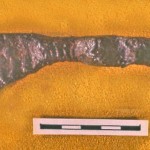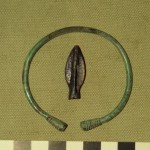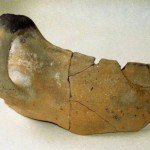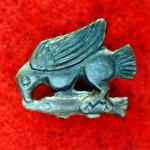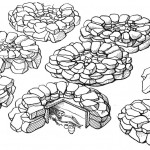Sinds, Kerkets, Torets
Population at the Hillfeet of the North-West Caucasus
In 8th-4th centuries BC
The first descriptions of the region, and hence the appearance of the population living there on the these historical arena is associated with the development of the North Black Sea coast by the ancient Greeks. The Greek colonists in had closes relations more with peaceful Sinds, since then their political history is closely linked with the history of the Bosporus state (Polyaen, Strateg., 8, 55).
According to ancient authors, in the 6th‒1th century BC the tribes of Kerkets and Torets lived between Gorgippia (Anapa) and Torik (Gelendzhik) southwest of Sinds (Ps.-Skyl. 72-75; Strabo. XI 2, 1; Plin. NH. VI. 17). According to Pseudo-Skilak (4th century BC), the Kerkets had live closer to the Sinds harbor, further Torets and the Hellenic town of Torik with a harbor. Most of the known archaeological sites of pre-Greek population of the hillfeet are the mounds that date back to the 6th‒4th centuries BC, their great number is an evidence of relatively high density of the local population in that period.
The burials in those cemeteries were made on the ancient level in the stone boxes of large slabs of sandstone, and were surrounded by towerlike structures of large rough stones or sea boulders. This tradition exists on the Abrau peninsula since the Late Bronze Age. Just as in the «Sindic» cemeteries of the coast (near Gorgippia ‒ Anapa), the «classical» form, incouples, presumably a family or asynchronous collective burial (obviously relatives, with the orientation of the body in the eastern sector).
Aboriginal burial topography is characterized by a dense, ordered (as a rule in rows) arrangement of burial structures, indicating to the tradition and regimented life of the population. The forms of burial structures of the population at the hillfeet of the North-West Caucasus have obvious parallels in the cemeteries of the indigenous population of the mountains, of the southern coast of Crimea (Crimean megalithic culture (Tavrs)) and of the hillfeet of the steppe and the coast, in particular, the Kerch Peninsula (Kizil-Koba culture) that allows some scientists to speak about their Caucasian origin.
Speaking of influences from other cultures, we should specially mention a long-term influence of the Prikuban population (sedentary or semi-sedentary Meotian and successive over the time in the floodplain and the steppe of the nomads of the region) on the local culture. It is seen in the burial complexes of the local culture since the prescythian time, allowing researchers to regard archaeological sites as a component of the single cultural-historical community.
Evidences of significant social differentiation for the 6th‒4th centuries BC are quite few. They are expressed in the presence in the funerary complexes of greater variety of prestigious and expensive imported objects: items of the defensive armor (plate armor) and bridle sets, decorated with the Scythian zoomorphic plastic.
In the Hellenistic times, apparently modeled on the ancient crypts, burial practice appears through the end of the stone box. In the 3th‒2th centuries BC. Native habitat complexes got drastically reduced. A custom of burial in stone boxes inside the plates, ‒ cromlechs exist up to the Roman period only in the canyons of the Shirokaya Balka and in the valley of the Ozereyka river.
(Aleksey A. Malyshev)


